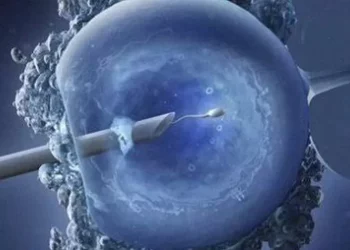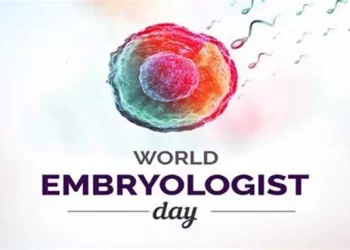Azoospermia is a medical condition characterized by the complete absence of sperm in the ejaculate. It affects approximately 1% of the male population and is found in 10-15% of infertile men. This condition can be a significant barrier to achieving fatherhood, posing both physiological and emotional challenges for those affected. The inability to conceive naturally often leads to feelings of frustration, inadequacy, and distress. For many men, the desire for fatherhood remains a central part of their identity, making the diagnosis of azoospermia particularly distressing.
In recent years, there has been a surge of interest in developing new treatments for azoospermia. These emerging therapies offer hope to men who dream of becoming biological fathers. This article explores the current and emerging treatments for azoospermia, shedding light on the advances that may soon transform the landscape of male infertility treatment.
Current Treatment Landscape
The traditional approach to treating azoospermia largely depends on whether the condition is obstructive or non-obstructive. Obstructive azoospermia (OA) occurs when sperm production is normal, but a blockage prevents sperm from being present in the ejaculate. Non-obstructive azoospermia (NOA) involves impaired or absent sperm production in the testes.
Established Treatments for Obstructive Azoospermia
For men with obstructive azoospermia, surgical sperm retrieval techniques such as microdissection testicular sperm extraction (micro-TESE) are commonly employed. Micro-TESE involves the meticulous dissection of testicular tissue under an operating microscope to locate and retrieve sperm directly from the seminiferous tubules. This method has a high success rate, particularly when combined with assisted reproductive technologies (ART) like intracytoplasmic sperm injection (ICSI). In ICSI, a single sperm is injected directly into an egg, significantly enhancing the chances of fertilization.
Role of Assisted Reproductive Technologies
ART plays a crucial role in the management of azoospermia. Techniques like in vitro fertilization (IVF) and ICSI have revolutionized the treatment of male infertility. By using sperm retrieved through methods like micro-TESE, these technologies bypass the natural barriers to fertilization, offering men with azoospermia a viable pathway to fatherhood.
Emerging Frontiers
Despite the success of current treatments, they are not universally effective, particularly for men with non-obstructive azoospermia. As a result, research has increasingly focused on developing innovative treatments that address the underlying causes of azoospermia and improve the prospects of sperm production and retrieval. Here are some of the most promising emerging treatments.
Stem Cell Therapy
Stem cell therapy represents a groundbreaking approach in the treatment of azoospermia. This technique involves the use of stem cells, which have the unique ability to differentiate into various cell types, including sperm cells.
Concept of Stem Cell Therapy
Researchers are exploring the potential of stem cells to generate sperm cells in men with azoospermia. The idea is to either stimulate the existing stem cells within the testes to produce sperm or to introduce new stem cells capable of developing into sperm.
See also: Male Infertility: A Comprehensive Guide to Azoospermia
Methods of Stem Cell Therapy
1. Systemic Infusion: One approach involves the systemic infusion of stem cells, where stem cells are introduced into the bloodstream and directed to the testes. These stem cells then migrate to the testicular tissue, where they can potentially differentiate into sperm cells.
2. Direct Testicular Injection: Another method is the direct injection of stem cells into the testes. This localized approach aims to create a more conducive environment for the stem cells to develop into functional sperm.
While the preliminary results of these methods are promising, it is important to note that stem cell therapy for azoospermia is still in its infancy. More extensive research and clinical trials are needed to establish its safety, efficacy, and long-term outcomes.
Hormonal Interventions
Hormonal imbalances can significantly impact sperm production. In some cases, azoospermia is caused by disruptions in the hormonal signals that regulate the testicular function. Addressing these imbalances through hormonal interventions can improve sperm production in certain men.
Understanding Hormonal Contributions
The production of sperm is regulated by a delicate balance of hormones, including follicle-stimulating hormone (FSH), luteinizing hormone (LH), and testosterone. Imbalances in these hormones can lead to impaired spermatogenesis.
Use of Medications
1. Clomiphene Citrate: Clomiphene citrate is a medication commonly used to treat hormonal imbalances in men with azoospermia. It works by stimulating the release of FSH and LH, which in turn can boost testosterone levels and promote spermatogenesis.
2. Human Chorionic Gonadotropin (hCG): hCG is another hormone used to stimulate the testes. It mimics the action of LH, encouraging the testes to produce testosterone and, consequently, sperm.
The success of hormonal treatments largely depends on accurately identifying and addressing specific hormonal deficiencies. Personalized treatment plans based on detailed hormonal evaluations are crucial for achieving positive outcomes.
See also: A How-To Guide: Can Non-Obstructive Azoospermia Be Cured?
Advanced Sperm Retrieval Techniques
Advances in imaging technology and minimally invasive surgical techniques are paving the way for more effective sperm retrieval methods, particularly for men with non-obstructive azoospermia.
Specialized MRI Scans
Recent developments include the use of specialized magnetic resonance imaging (MRI) scans to identify areas of active sperm production within the testes. These scans provide detailed images that can guide surgeons during sperm retrieval procedures, increasing the likelihood of finding viable sperm.
Minimally Invasive Methods
Ongoing research is focused on refining minimally invasive methods for sperm retrieval. Techniques such as fine needle aspiration and advanced endoscopic procedures aim to reduce the physical and psychological burden associated with traditional sperm retrieval surgeries. These methods offer the potential for less invasive and more precise sperm extraction.
Conclusion
The landscape of azoospermia treatment is rapidly evolving, bringing new hope to men who aspire to fatherhood. Emerging treatments such as stem cell therapy, hormonal interventions, and advanced sperm retrieval techniques are at the forefront of this transformation. While these approaches are still under investigation, they represent a significant step forward in the quest to overcome male infertility.
It is essential for men with azoospermia to consult with a urologist or fertility specialist to explore their options and develop a personalized treatment plan. With continued research and innovation, the future of azoospermia treatment looks promising, offering renewed hope and possibilities for achieving biological fatherhood.
Related Topics:
How to Treat Azoospermia at Home: A Complete Overview



























